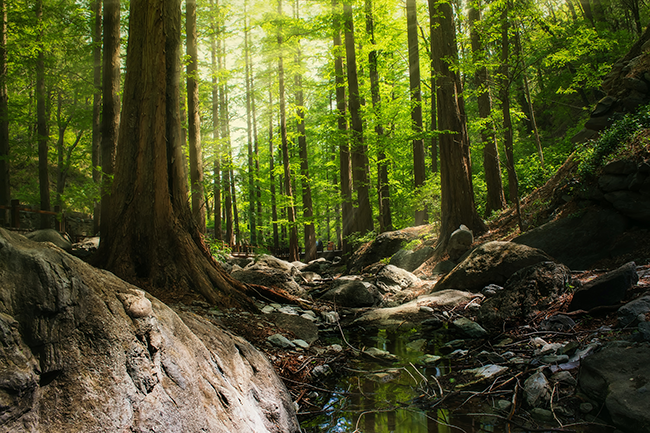The bark beetle calamity is receding, foresters prepare to restore infrastructure
The bark beetle calamity, which fully erupted in the Czech forests in 2018, is behind its peak and is receding. The calamity has already subsided in Moravia, and foresters are also gaining control of it in the Vysočina region. "The last large battlefield with the bark beetle remains in the Ústí nad Labem and Liberec regions, specifically in the Děčín, Českolipsko and Liberecko regions," Martin Zajíček, spokesman for the state enterprise Lesy České republiky (LČR). According to him, foresters are now concentrating on afforestation and are preparing to restore destroyed forest roads and infrastructure.
In addition to intensive logging of infested wood and other defensive scalds, this year's very cold and rainy spring also contributed to the decline of the bark beetle calamity, which is the largest in the history of the Czech Republic. The weather delayed the spring swarming of the bark beetle by about one month.
The priority of the Forests of the Czech Republic is the restoration of bark beetle-destroyed forests. "Until 2018, the common afforestation area for Lesy ČR was 10,000 hectares, this year 22,000 hectares are planned. We used 50 to 55 million seedlings a year, this year it will be 90 to 100 million," said Josef Vojáček, CEO of LČR.
In the regions where the calamity has already passed, Lesy ČR is preparing to restore roads damaged by mining and transport equipment. "The company already has the funds set aside for this, hundreds of millions of crowns will go to the renewal of roads and forest infrastructure," said Zajíček. He reminded that thanks to rising wood prices, the company is again creating financial reserves for the restoration of forests and forest property. In the first half of this year, the company returned to a profit of 680 million crowns after last year's loss of CZK 480 million.
As part of the rapid afforestation of areas after the bark beetle, the state-owned company also changed the orientation of its seed plant in Týniště nad Orlicí to the production of deciduous tree seeds from previously predominant conifers. There is now a high demand for deciduous trees. So far, the plant has invested about 40 million crowns in higher production of deciduous seeds and is preparing further investments. The plant's production has doubled in the last three years, with the composition of woody plants reversing to 67 percent deciduous trees and 33 percent conifers.
The forests of the Czech Republic, which manage almost half of the country's forests, have already reduced the annual logging plan with the decline of the calamity. And that's 12.1 million cubic meters of the planned 14.07 million cubic meters. Last year, logging in state forests reached a record 14.35 million cubic meters of timber, of which 93 percent went to bark beetle and other incidental logging.
According to the Czech forest think tank, Kůrovec in the Czech Republic last year attacked 35 to 40 million cubic meters of wood. The damage caused by the low purchase price of bark wood and the premature harvesting of stands last year reached CZK 44 billion, Czech Forest estimated. According to the Czech Statistical Office, timber harvesting in the Czech Republic last year reached a record 35.8 million cubic meters. It thus increased by 9.7 percent year-on-year.
Source: CTK









